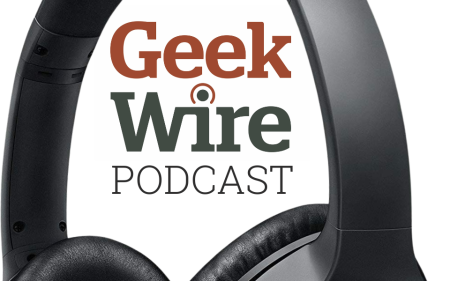The Rise and Potential Fall of Rad Power Bikes: A Seattle E-Bike Saga
In the heart of Seattle’s Ballard neighborhood stands the headquarters of what was once the largest e-bike seller in North America—Rad Power Bikes. The company that transformed how Americans think about electric bicycles now faces potential shutdown by January due to “significant financial challenges.” This dramatic reversal of fortune has left nearly 700,000 Rad riders, including 76-year-old John Ward who uses his Rad City e-bike for daily activities, wondering what went wrong with their beloved hometown brand. Ward, pausing during his ride along Seattle’s Burke-Gilman Trail, expressed his concern: “It’s a bummer. I’m 76 and I don’t like climbing up the hills anymore, and I got this Rad bike and I’ve been very happy.” Like many Rad owners, he now worries about future parts availability and service options if the company disappears—a stark contrast to the promising startup that grew into a unicorn valued at $1.65 billion just a few years ago.
Rad Power Bikes started as founder Mike Radenbaugh’s teenage tinkering project before officially launching its direct-to-consumer model in 2015, offering approachable e-bikes at sub-$2,000 price points. The company’s genius was opening up cycling to people who might never have entered a traditional bike shop. “They made bicycles accessible to people that may be intimidated going into a bike shop,” explained Peter Clancy of Westside Bicycle in Seattle. The company essentially built the modern e-bike space, creating a new “lifestyle” segment for regular people rather than hardcore cyclists. Marty Pluth, general manager at Gregg’s Cycle, recalls seeing “a ton of Rad bikes” during his commutes—riders wearing ski jackets or baggy shorts rather than typical cycling gear—a clear sign the company had tapped into an entirely new customer base. The early team operated with scrappy efficiency while methodically scaling their business. Co-founder Ty Collins described the company’s initial success: “We’d sell thousands of bikes in seconds. We literally couldn’t keep bikes in stock.” By 2019, Rad reported $100 million in revenue and secured investment from former Zulily and Blue Nile executives Darrell Cavens and Mark Vadon.
Then the pandemic hit, supercharging demand for outdoor recreation products, with Rad citing a staggering 297% increase in May 2020 alone. This sudden surge presented the classic dilemma many e-commerce companies faced: was this explosive growth a temporary blip or the new normal? The company bet big on the latter, raising more than $300 million from investors in 2021, doubling its workforce to over 600 employees, and aggressively securing inventory. “The thought was that this was a catalyst in the electric bike boom,” Collins explained. Like many businesses during this period, Rad struggled with supply chain disruptions, taking extraordinary measures like purchasing 64 shipping containers and chartering its own cargo from Asia. But as pandemic demand eventually normalized, Rad found itself overstocked with hundreds of millions of dollars in inventory. Former supply chain leader Leah Hunkins described the situation bluntly: “It’s like walking around with a bowling ball around our ankles and going for a run—you can’t move.” The inventory problem created a vicious cycle—selling bikes below cost to clear stock meant losing money on each sale, creating what Pluth called a “double-whammy of lower demand and a lot of product in stock.”
As Rad struggled with inventory challenges, the competitive landscape shifted dramatically. New e-bike brands like Lectric and Velotric emerged, while traditional bike manufacturers finally entered the e-bike market in force, all taking pieces of what had once been Rad’s domain. The company found itself squeezed in the middle market segment—not the cheapest option, not the most premium choice. “The differentiation of our product got more challenging,” admitted Hunkins. This market saturation became visible even during GeekWire’s brief interview with John Ward on the Burke-Gilman Trail, where e-bikes from at least seven different manufacturers passed by in what was once Rad’s territory. Adding to these challenges, Rad faced serious operational and legal issues, including wrongful death and property damage lawsuits, the recall of nearly 30,000 units due to safety concerns, and mounting customer service complaints. The company’s direct-to-consumer model, initially a competitive advantage, became increasingly problematic as tens of thousands of riders needed service in markets where independent shops had limited experience with Rad’s proprietary components.
Rad Power Bikes’ struggles reflect broader challenges facing consumer hardware startups in the post-2022 investment climate. Clayton Wood, former CEO of Seattle-based cooking startup Picnic, noted that “hardware success requires patient capital as it will take a long time and money to build an enduring brand,” adding that “that capital is very scarce in the last few years.” The funding environment changed dramatically in 2022, leaving hardware companies that had raised capital at high valuations particularly vulnerable. Unlike software companies that can pivot relatively easily, hardware businesses face high production setup and development costs that make adaptation difficult. Amish Patel of Conduit Venture Labs explained that consumer hardware companies with unit-margin-based business models are particularly fragile, especially without supplementary revenue from software, services, or subscriptions. Some local bike shop owners questioned Rad’s business model from the beginning. “It just seemed weird that a company like that couldn’t stand on its own without huge cash influxes,” said David Johnson of Electric & Folding Bikes Northwest, while David Thomas of Polka Dot questioned the sustainability of pandemic-era growth projections: “I don’t quite understand why anyone thought during the pandemic that they were going to sustain a 500% increase in business year-over-year for five years.”
Despite Rad’s current troubles, the broader e-bike market remains strong, with the U.S. segment expected to grow from $54.1 billion in 2025 to $87.1 billion by 2032. Rad isn’t alone in its struggles—European brands VanMoof and Cowboy have also faced significant challenges in the post-pandemic landscape. As Rad works to “stabilize the business” and explore options for survival, many in the industry hope the pioneering company can find a path forward. “They are a good quality company that makes good bikes,” said Justin Taylor of Electric Bike Report. “And I do think the industry is better with them here.” Rad’s journey from scrappy startup to industry leader to potential shutdown serves as a cautionary tale about the challenges of scaling hardware businesses, the dangers of overexpansion during unusual market conditions, and the difficult balance between growth ambitions and sustainable operations. For the hundreds of thousands of Rad riders, the company’s struggle is more than just business news—it’s a potential end to a brand that helped many of them rediscover the joy of cycling regardless of age, fitness level, or cycling experience.















